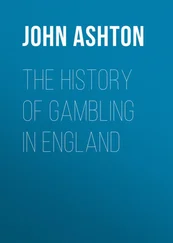John Aston Warder - American Pomology. Apples
Здесь есть возможность читать онлайн «John Aston Warder - American Pomology. Apples» — ознакомительный отрывок электронной книги совершенно бесплатно, а после прочтения отрывка купить полную версию. В некоторых случаях можно слушать аудио, скачать через торрент в формате fb2 и присутствует краткое содержание. Жанр: foreign_prose, Биология, foreign_edu, foreign_antique, на английском языке. Описание произведения, (предисловие) а так же отзывы посетителей доступны на портале библиотеки ЛибКат.
- Название:American Pomology. Apples
- Автор:
- Жанр:
- Год:неизвестен
- ISBN:нет данных
- Рейтинг книги:5 / 5. Голосов: 1
-
Избранное:Добавить в избранное
- Отзывы:
-
Ваша оценка:
- 100
- 1
- 2
- 3
- 4
- 5
American Pomology. Apples: краткое содержание, описание и аннотация
Предлагаем к чтению аннотацию, описание, краткое содержание или предисловие (зависит от того, что написал сам автор книги «American Pomology. Apples»). Если вы не нашли необходимую информацию о книге — напишите в комментариях, мы постараемся отыскать её.
American Pomology. Apples — читать онлайн ознакомительный отрывок
Ниже представлен текст книги, разбитый по страницам. Система сохранения места последней прочитанной страницы, позволяет с удобством читать онлайн бесплатно книгу «American Pomology. Apples», без необходимости каждый раз заново искать на чём Вы остановились. Поставьте закладку, и сможете в любой момент перейти на страницу, на которой закончили чтение.
Интервал:
Закладка:
One of the most successful experimenters in this country is Doctor J.P. Kirtland, near Cleveland, Ohio, whose efforts at crossing certain favorite cherries, were crowned with the most happy results, and all are familiar with the fruits that have been derived from his crosses. The details of his applying the pollen of one flower to the pistils of another are familiar to all intelligent readers, and have been so often set forth, that they need not be repeated in this case—great care is necessary to secure the desired object, and to guard against interference from causes that would endanger or impair the value of the results.
Van Mons' theory was based upon certain assumptions and observations, some of which are well founded, others are not so firmly established. He claimed correctly that all our best fruits were artificial products, because the essential elements for the preservation of the species in their natural condition, are vigor of the plant and perfect seeds for the perpetuation of the race. It has been the object of culture to diminish the extreme vigor of the tree so as to produce early fruitage, and at the same time to enlarge and to refine the pulpy portion of the fruit. He claimed, as a principle, that our plants of culture had always a tendency to run back toward the original or wild type, when they were grown from seeds. This tendency is admitted to exist in many cases, but it is also claimed, that when a break is once made from the normal type, the tendency to improve may be established. Van Mons asserted that the seeds from old trees would be still more apt to run back toward the original type, and that "the older the tree, the nearer will the seedlings raised from it approach the wild state," though he says they will not quite reach it. But the seeds from a young tree, having itself the tendency to melioration, are more likely to produce improved sorts.
He thinks there is a limit to perfection, and that, when this is reached, the next generation will more probably produce bad fruit than those grown from an inferior sort, which is on the upward road of progression. He claims that the seeds of the oldest varieties of good fruit yield inferior kinds, whereas those taken from new varieties of bad fruit, and reproduced for several generations, will certainly give satisfactory results in good fruit.
He began with seeds from a young seedling tree, not grafted upon another stock; he cared nothing for the quality of the fruit, but preferred that the variety was showing a tendency to improvement or variation . These were sowed, and from the plants produced, he selected such as appeared to him to have evidence of improvement, (it is supposed by their less wild appearance), and transplanted them to stations where they could develop themselves. When they fruited, even if indifferent, if they continued to give evidence of variation, the first seeds were saved and planted and treated in the same way. These came earlier into fruit than the first, and showed a greater promise. Successive generations were thus produced to the fourth and fifth, each came into bearing earlier than its predecessor, and produced a greater number of good varieties, and he says that in the fifth generation they were nearly all of great excellence. He found pears required the longest time, five generations; while the apple was perfected in four, and stone fruits in three.
Starting upon the theory that we must subdue the vigor of the wilding to produce the best fruits, he cut off the tap roots when transplanting and shortened the leaders, and crowded the plants in the orchard or fruiting grounds, so as to stand but a few feet apart. He urged the "regenerating in a direct line of descent as rapidly as possible an improving variety, taking care that there be no interval between the generations. To sow, re-sow, to sow again, to sow perpetually, in short to do nothing but sow, is the practice to be pursued, and which cannot be departed from; and, in short, this is the whole secret of the art I have employed." ( Arbres Fruitiers. )
Who else would have the needed patience and perseverance to pursue such a course? Very few, indeed—especially if they were not very fully convinced of the correctness of the premises upon which this theory is founded. Mr. Downing thinks that the great numbers of fine varieties of apples that have been produced in this country, go to sustain the Van Mons doctrine, because, as he assumes, the first apples that were produced from seeds brought over by the early emigrants, yielded inferior fruit which had run back toward the wild state, and the people were forced to begin again with them, and that they most naturally pursued this very plan, taking seeds from the improving varieties for the next generations and so on. This may have been so, but it is mere assumption—we have no proof, and, on the contrary, our choice varieties have so generally been conceded to have been chance seedlings, that there appears little evidence to support it—on the contrary, some very fine varieties have been produced by selecting the seeds of good sorts promiscuously, and without regarding the age of the trees from which the fruit was taken. Mr. Downing himself, after telling us that we have much encouragement to experiment upon this plan of perfecting fruits, by taking seeds from such as are not quite ripe, gathered from a seedling of promising quality, from a healthy young tree (quite young,) on its own root, not grafted, and that we "must avoid 1st, the seeds of old trees; 2d, those of grafted trees; 3d, that we must have the best grounds for good results"—still admits what we all know, that "in this country, new varieties of rare excellence are sometimes obtained at once by planting the seeds of old grafted varieties; thus the Lawrence Favorite and the Columbia Plums were raised from seeds of the Green Gage, one of the oldest European varieties."
Let us now look at an absolute experiment conducted avowedly upon the Van Mons plan in our own country, upon the fertile soil of the State of Illinois, and see to what results it led:—
The following facts have been elicited from correspondence with H.P. Brayshaw, of Du Quoin, Illinois. The experiments were instituted by his father many years ago, to test the truth of the Van Mons' theory of the improvement of fruits by using only the first seeds.
Thirty-five years ago, in 1827, his father procured twenty-five seedling trees from a nursery, which may be supposed to have been an average lot, grown from promiscuous seed. These were planted, and when they came into bearing, six of them furnished fruit that might be called " good " and of these, "four were considered fine ." One of the six is still in cultivation, and known as the Illinois Greening . Of the remainder of the trees, some of the fruits were fair, and the rest were worthless, and have disappeared.
Second Generation. —The first fruits of these trees were selected, and the seeds were sown. Of the resulting crop, some furnished fruit that was "good," but they do not appear to have merited much attention.
Third Generation. —From first seeds of the above, one hundred trees were produced, some of which were good fruit, and some "even fine," while some were very poor, "four or five only merited attention." So that we see a retrogression from the random seedlings, furnishing twenty-five per cent, of good fruit, to only four or five per cent. in the third generation, that were worthy of note.
Fourth Generation. —A crop of the first seed was again sown, producing a fourth generation; of these many were "good culinary fruits," none, or very few being of the "poorest class of seedlings," none of them, however, were fine enough "for the dessert."
Fifth Generation. —This crop of seedlings was destroyed by the cut-worms, so that only one tree now remains, but has not yet fruited. But Mr. Brayshaw appears to feel hopeful of the results, and promises to continue the experiment.
Читать дальшеИнтервал:
Закладка:
Похожие книги на «American Pomology. Apples»
Представляем Вашему вниманию похожие книги на «American Pomology. Apples» списком для выбора. Мы отобрали схожую по названию и смыслу литературу в надежде предоставить читателям больше вариантов отыскать новые, интересные, ещё непрочитанные произведения.
Обсуждение, отзывы о книге «American Pomology. Apples» и просто собственные мнения читателей. Оставьте ваши комментарии, напишите, что Вы думаете о произведении, его смысле или главных героях. Укажите что конкретно понравилось, а что нет, и почему Вы так считаете.












